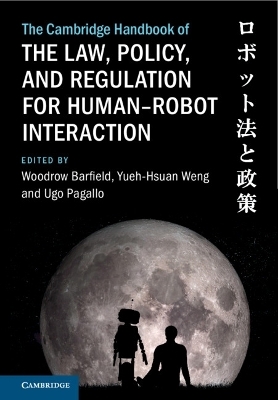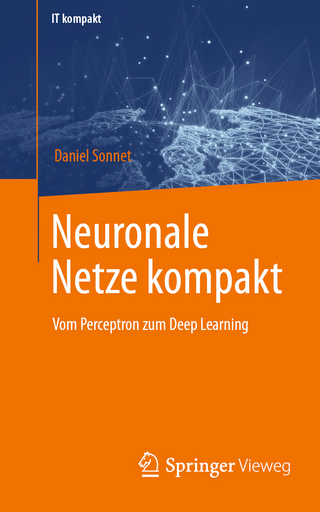
The Cambridge Handbook of the Law, Policy, and Regulation for Human–Robot Interaction
Cambridge University Press (Verlag)
978-1-009-38666-1 (ISBN)
- Lieferbar (Termin unbekannt)
- Versandkostenfrei innerhalb Deutschlands
- Auch auf Rechnung
- Verfügbarkeit in der Filiale vor Ort prüfen
- Artikel merken
This volume provides a unique perspective on an emerging area of scholarship and legislative concern: the law, policy, and regulation of human-robot interaction (HRI). The increasing intelligence and human-likeness of social robots points to a challenging future for determining appropriate laws, policies, and regulations related to the design and use of AI robots. Japan, China, South Korea, and the US, along with the European Union, Australia and other countries are beginning to determine how to regulate AI-enabled robots, which concerns not only the law, but also issues of public policy and dilemmas of applied ethics affected by our personal interactions with social robots. The volume's interdisciplinary approach dissects both the specificities of multiple jurisdictions and the moral and legal challenges posed by human-like robots. As robots become more like us, so too will HRI raise issues triggered by human interactions with other people.
Woodrow Barfield is a speaker, lecturer, and author who served as full professor of engineering and law. He received the NSF Presidential Young Investigator Award and is editor of Fundamentals of Wearable Computers and Augmented Reality (2015) and co-editor of Research Handbook on the Law of Artificial Intelligence (2018). He is currently an associate editor of the Virtual Reality Journal, review editor for Frontiers in Artificial Intelligence, and an editorial board member for Delphi: Interdisciplinary Review of Emerging Technologies. Yueh-Hsuan Weng is an Associate Professor at Institute of Advanced Study (IAS) and Graduate School of Law, Kyushu University (Japan). He has been an Assistant Professor at FRIS and Graduate School of Engineering, Tohoku University (Japan) from 2017 to 2023. He is interested in interdisciplinary studies, especially in issues concerning the interface between AI and Law. During his Ph.D. studies at Peking University, Weng founded ROBOLAW.ASIA and CHINA-LII, China's first initiatives in AI Law and Free Access to Law. Ugo Pagallo is a Full Professor of Jurisprudence at the University of Turin (Italy). He is author of thirteen monographs, a hundred essays in scholarly journals and book chapters, and a member of international projects, collaborating with such institutions as the European Commission, the World Health Organization, and the Japanese government.
Forward; Preface; 1. Introduction to law, policy, and regulations for human-robot interaction; 2. Anthropomorphism and human-robot interaction (HRI); 3. Human-robot interaction implications: for law, policy, and regulations; 4. Trust-based interfaces in hr interaction. context, communication and information; 5. Robots, regulation, and the changing nature of public space; 6. Challenges of the legal protection of human lives in the time of anthropomorphic robots; 7. What will robot laws look like? Considering code, AI and human laws; 8. Oversight boards for regulation of AI-enabled robots; 9. Building a smart legal ecosystem for industry 5.0; 10. I, Robot? legal personality for robots and the android fallacy; 11. 'Legal being': going beyond the debate of legal personhood for 'intelligent' non-humans; 12. Robot romance; 13. Robot natives: future design and regulations for baby robot interaction; 14. Should social and assistive robots integrated within home- and healthcare services be universally designed?; 15. Regulating emotional artificial intelligence in cars; 16. Some critical thoughts on anthropomorphic social robot design; 17. A critical analysis of consent in human–robot interaction; 18. Rosie is a rental: what thriving interactive robotics could mean for our society; 19. Bots against bias: critical next steps for human-robot interaction; 20. Robot ethics for interaction with humanoid, AI-enabled and expressive robots; 21. The ubuntu robot: towards a relational conceptual framework for intercultural robotics; 22. Ethical, legal, and social concerns in the application of social robots in religious settings: a case study of the catholic robot santo; 23. Helpers for helpers: ethical and legal considerations for long-term care robots; 24. Ethical design and standardization for robot governance; 25. Eight recommendations for ethical and legal assessments of robotic systems interacting with humans; 26. Cultural differences in social robot perception; 27. Moral interaction with social robots; 28. I'm not like the others, I'm your friend: towards an ethics for AI in behavioural interventions and choice architectures; 29. Personal autonomy and machine autonomy in human-robot interaction; 30. Robots in a civilized society: should robots be taught to adhere to social norms?; 31. Racialization and bias toward humanoids; 32. Privacy considerations for socially assistive robots; 33. Privacy and transparency in human-robot interaction; 34. Robotic torts; 35. Limits of criminal law regulation of robotics: the Russian federation law perspective; 36. Robot criminal liability; 37. The use of artificial intelligence on criminal proceedings with robot judges as a different dimension; 38. The first amendment and robots in virtual and physical worlds; 39. Humanoid robots and consumer law and policy; 40. Therapy without therapists: human-robot interaction under the EU medical device regulation and the artificial intelligence act; 41. Legal analysis of a social robot: the appropriation of ideas and labor; 42. Considering the tax policy implications of automation and AI-enabled robots; 43. Humanoid AI systems for healthcare in outer space: a new generation of opportunities and legal puzzles; 44. Ensuring accountability for robots and AI under criminal law; 45. Intelligent industrial and service robots: a discussion of international human rights; 46. Concluding thoughts on future directions in law, policy, and regulations for human-robot interaction.
| Erscheinungsdatum | 02.10.2024 |
|---|---|
| Reihe/Serie | Cambridge Law Handbooks |
| Zusatzinfo | Worked examples or Exercises |
| Verlagsort | Cambridge |
| Sprache | englisch |
| Themenwelt | Geschichte ► Teilgebiete der Geschichte ► Technikgeschichte |
| Mathematik / Informatik ► Informatik | |
| Recht / Steuern ► Allgemeines / Lexika | |
| Recht / Steuern ► EU / Internationales Recht | |
| Recht / Steuern ► Privatrecht / Bürgerliches Recht ► IT-Recht | |
| ISBN-10 | 1-009-38666-2 / 1009386662 |
| ISBN-13 | 978-1-009-38666-1 / 9781009386661 |
| Zustand | Neuware |
| Haben Sie eine Frage zum Produkt? |
aus dem Bereich


